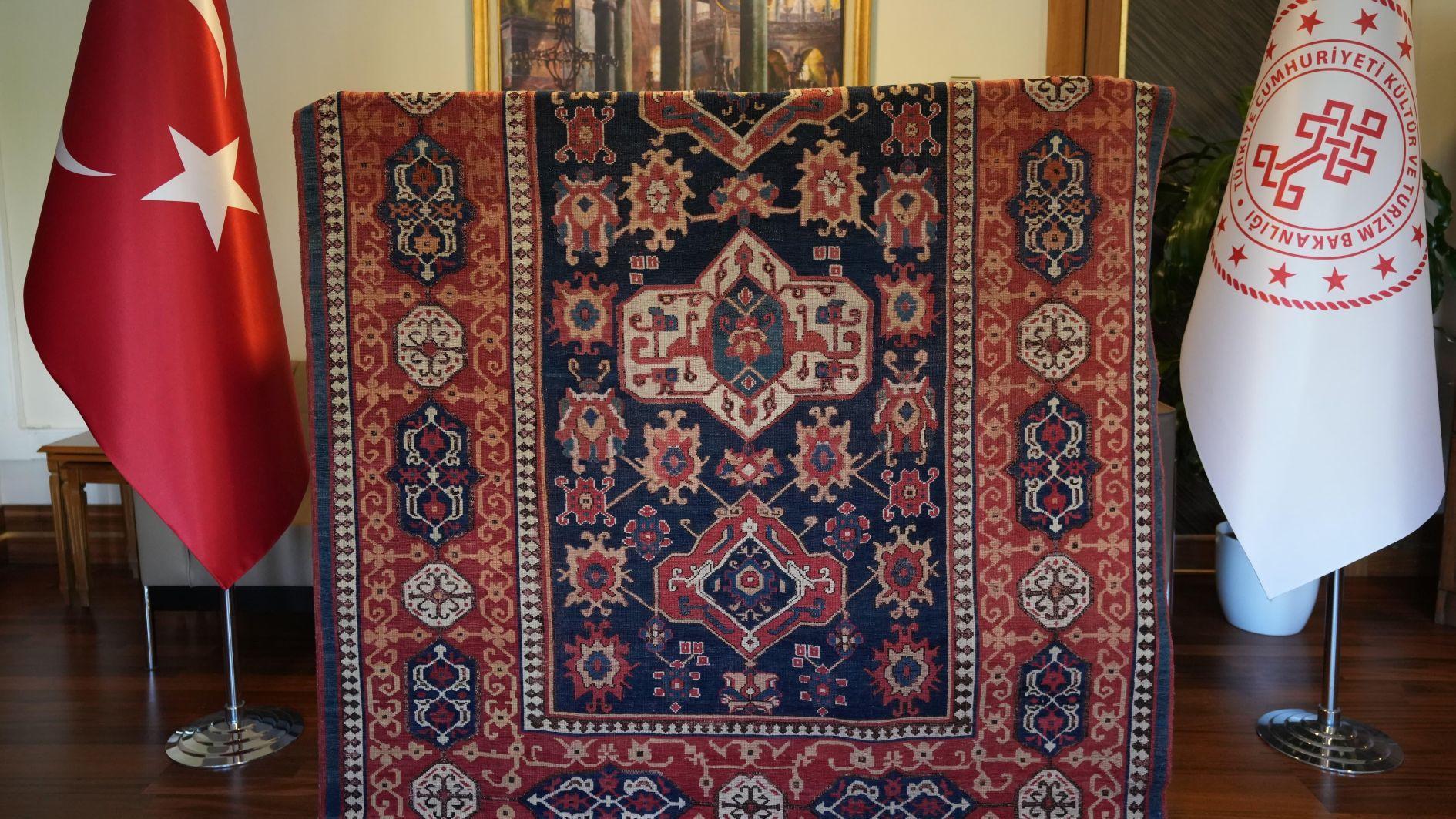
A nearly 500-year-old Uşak carpet has been returned to Türkiye after three decades abroad, Culture and Tourism Minister Mehmet Nuri Ersoy announced on July 6.
“The centuries-old Uşak carpet, a bearer of Ottoman artisanal tradition, has returned to the land where it was first woven after being lost for 30 years,” Ersoy said in a post on social media.
“We are proud to see this elegant carpet, once knotted thread by thread in Uşak, reunited with the land that inspired it — just like every heritage that carries the spirit of this soil,” he added.
Calling the return “a profound restoration of our culture, memory and refinement,” Ersoy extended his gratitude to Italian citizen Adrian Stefan Ionescu, who voluntarily returned the carpet. “I thank Mr. Ionescu for his sensitivity and care toward this piece of historical heritage,” he said.
According to a ministry statement, the rare carpet — an example of Ottoman-era weaving from Uşak — had resurfaced in a private collection abroad after being lost for many years.
The carpet had been purchased by Ionescu from the collection of the late Italian art enthusiast Ermininio Bottini. Upon discovering that the piece matched the one listed as item “06.456” in Suzan Bayraktaroğlu’s book “Vakıf Halılar” (Foundation Carpets), Ionescu voluntarily initiated its return, without making any demands.
The carpet, distinguished by its intricate design and craftsmanship — with more than a thousand knots fitted into a single square — was confirmed to be of Uşak origin based on its stylistic features.
The dark blue-ground carpet features large medallions made up of stylized naturalist flowers, with patterns in pastel red, yellow and off-white tones. Following restoration efforts to repair sections that had been damaged or lost, including a cut border visible in historical photographs, the carpet was restored to its original composition.
The piece has now been delivered to the Ankara Museum of Foundation Works, where it will be preserved as part of Türkiye’s cultural heritage.
Officials noted that the carpet reflects the aesthetic vision and craftsmanship of its time, and its return marks a significant step in reclaiming and protecting the country’s artistic legacy.